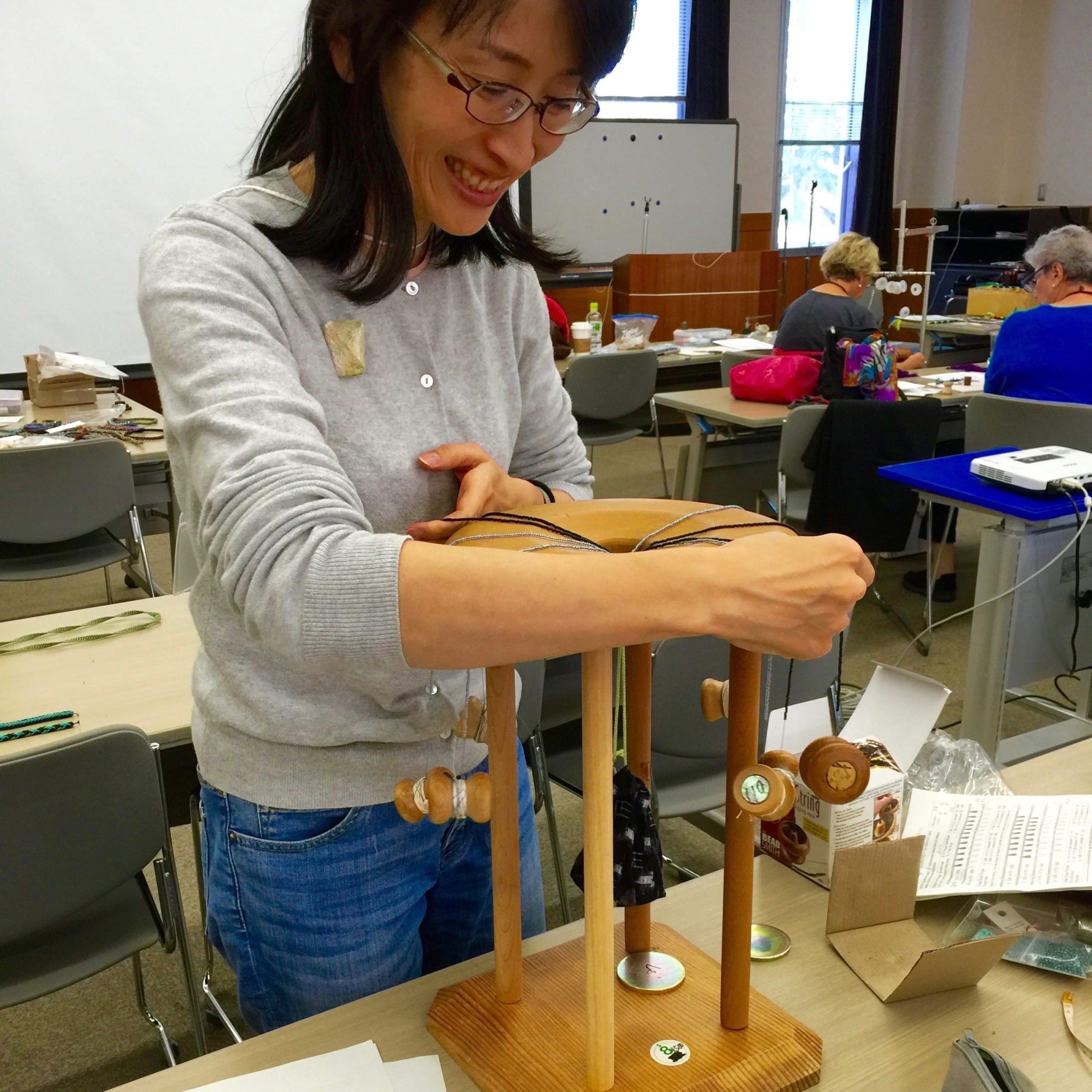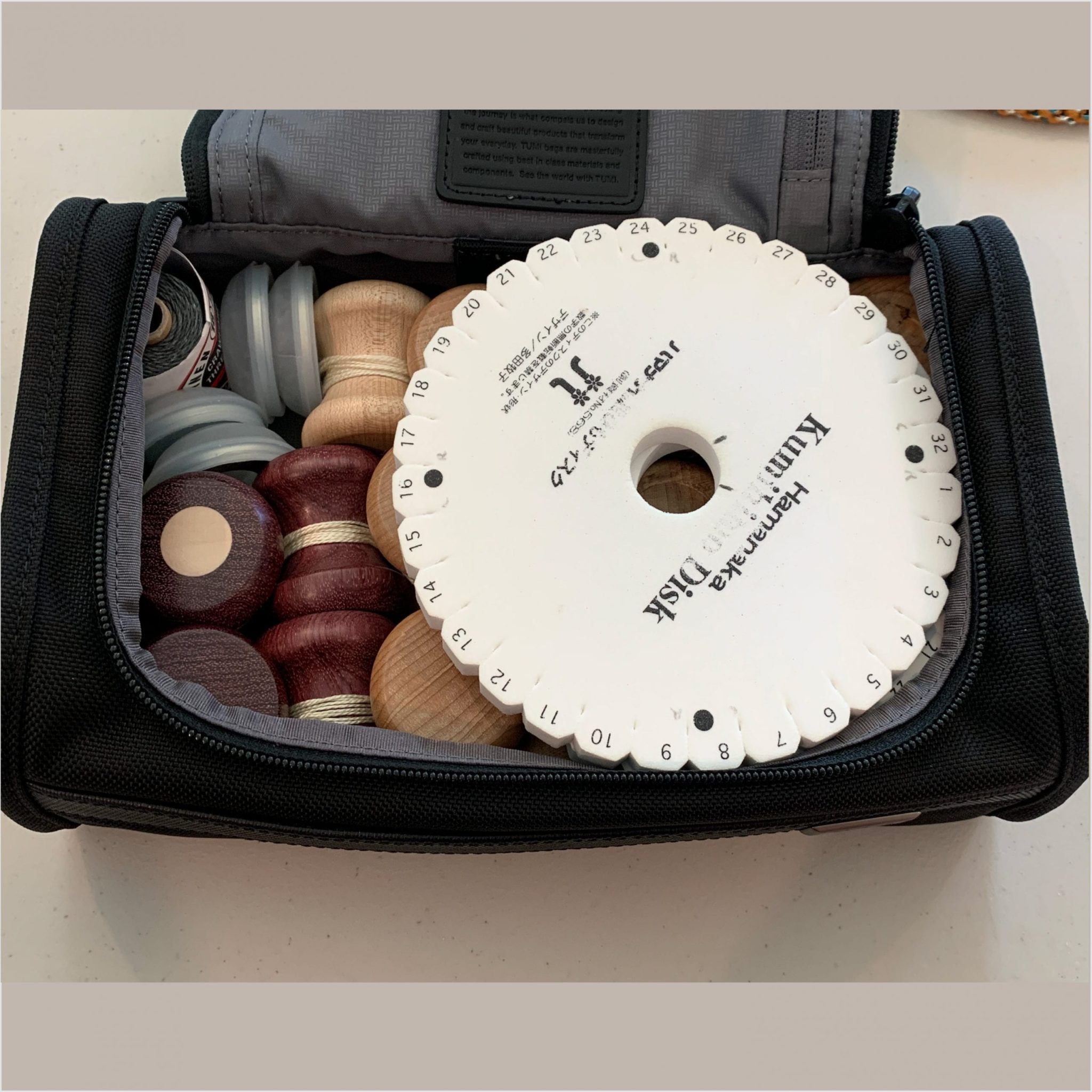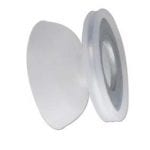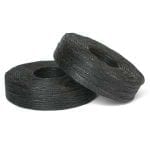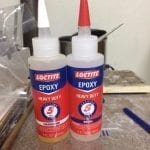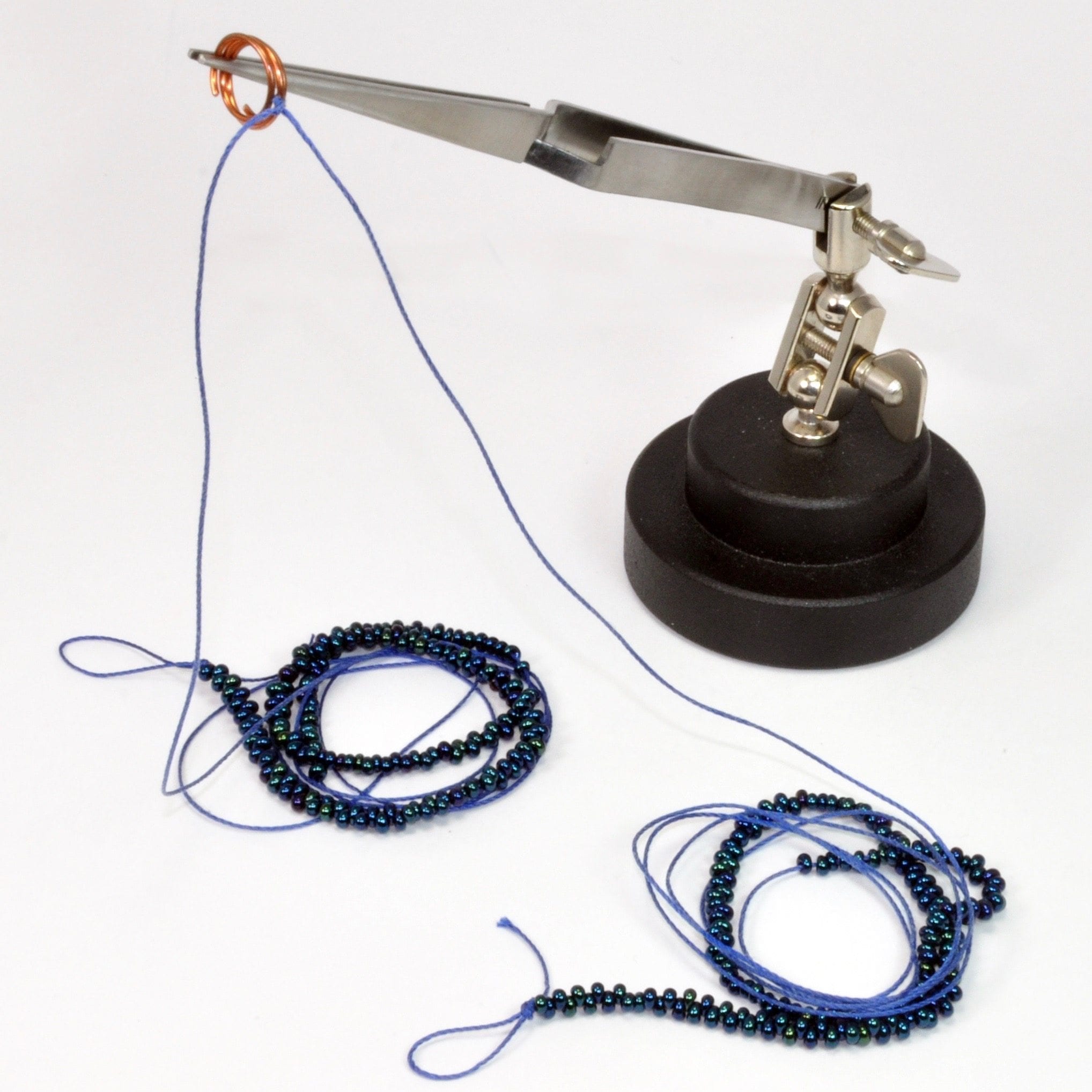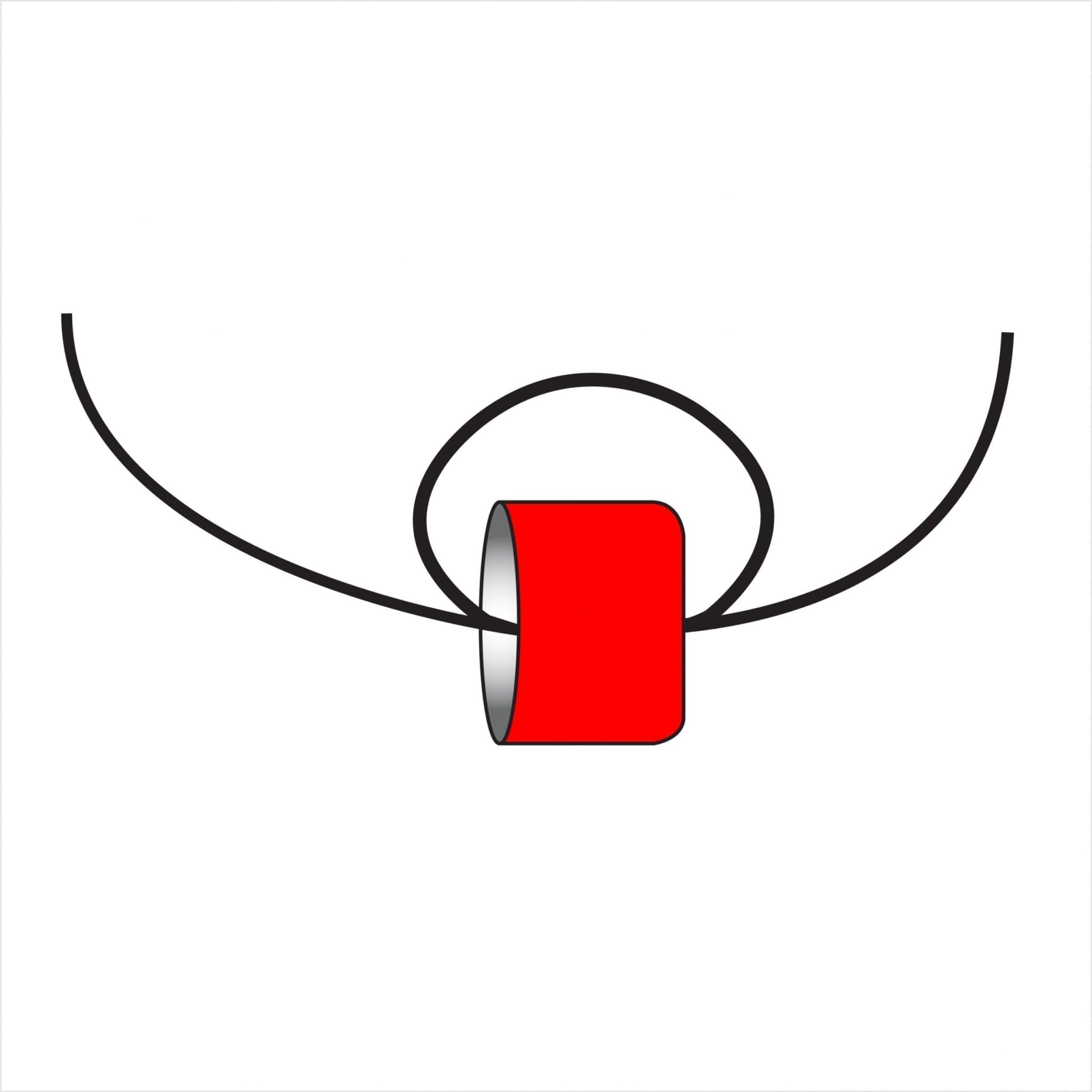Glossary
Marudai
Pronounced (ma-ru-dye). The marudai is considered the most versatile of the five basic types of kumihimo braiding stands, or dai. The word marudai comes from Japanese words maru 丸 meaning “round,” and...
Chopstick
A chopstick is needed when braiding on a marudai either with fiber or beaded braids. The chopstick is placed at the point of braiding (POB) whenever you are not braiding and especially when you take a...
Kumi Toolkit
In addition to marudai equipment or disk and/or plate, this is a list of the supplies and tools that every kumista should have in their Kumi Toolkit. Click on the item links for a brief explanation of...
Weighted Bobbins
Weighted plastic bobbins are used to hold fibers that need less weight than a tama but more than an unweighted bobbin. They are often used for cords that are additional to the tama used for the braid ...
Waxed Linen
I use waxed linen for a few things but mainly when I am working with fiber braids. The wax on the linen gives it a ‘grab’ quality that holds it in place. These are a few of the uses for wa...
Two Part Epoxy
This is the only glue that makes a permanent bond and it is the only glue recommended by professional jewelers. Two part epoxy forms a secure bond between the clasp and the braid even when there is a ...
Third Hand Tweezers
These really do give you the ability to have a ‘third hand’ while working. They feature self-locking tweezers, mounted on a weighted round base. Ball joints let you adjust the tweezer to m...
Stop Bead
This is an easy way to secure beads on a cord. A stop bead is added to a cord after all the other project beads have been strung. To make a stop bead pass the cord through a bead. Slide the bead down ...
Spring Stoppers a.k.a. Bead Stoppers
These are handy to have on hand when you need to temporarily hold threads or cords together. They also have another useful function. During the preparation of a beaded braid, it keeps your beads from ...

